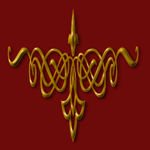





|
|
Irish Hill, Amador County Ghost Town | ||
|
The Irish Hill district is in northwestern Amador County about five miles north of Ione. It includes the Muletown and the Forest Home areas. The town site is an irregular acreage of cobbled mounds. Buildings are nonexistent. This is the oft-repeated pattern of a town destroyed when riches were discovered beneath it. The remains include evidence of the usual set-up of sluices operated at the arrival of a ditch, in this case the Plymouth Ditch bringing water from the Cosumnes. With water available at high pressures, the changes wrought in the scenery are exceeded nowhere in Amador and have few doubles anywhere in the Lode. |
||
|
The long hogback behind the town was attacked with monitors, cut clear around, and turned into a colossal, red-sided, green-topped Noah's Ark. The red of the sides is due to the iron oxide-loaded clay; the top is a cover of dense chemise. Hydraulic mining at Irish Hill continued to a much later date than at the neighboring diggings. This was made practicable by dams built below the scene of operations, which impounded the slickens and therefore drew no fire from the anti-silt regulations. Several small houses or rather semi-cabins, remained near the original town site until a relatively recent date. These were occupied by the crews engaged in the final cleanup of the giants. At roadside an Irish saloon outlasted them all. This has a sound of being entirely too pat. But things have a way of being that way sometimes, and so it was here. The proprietor was a friend of James Moore. |
||
|
This was a welcome oasis to those engaged in a cow drive from Forest Home to lone or vice versa and a port of call for all and sundry having business in those parts in that horse-drawn era. Every nationality had its own saloons, each as distinct as the ethnic group that produced it, though the entire population patronized all of them with no resentment or discrimination whatsoever and entire friendliness all around. |
||
|
This saloon was a thing of board-and-batten of fair dimensions fronted not by a road shed but what might be termed a sort of porte cochere. There were many Irish saloons in the Mother Lode. This was a fair example of one that might be termed in the middle range of affluence and decor, and so, fairly typical. Let us go inside and take a look. The two outer comers of the polished walnut bar sported quarter-round shields, one proclaiming the virtues of Guiness Stout, the other of Dublin Stout. Enameled medallions above the respective racks of the product of John Jamieson and Son and Jamieson Ltd. testified to their excellence. The pictures on the walls included photos of John L. Sullivan and Paddy Ryan in ring stance, bare knuckled, in black tights and spiked shoes; many other pictures showed racehorses. There may have been an old-time Irishman who was not a passionate lover of horses and an avid follower of the sport of kings. | ||

| ||
|
Information, photographs courtesy of the Amador County Archives, The Historical Marker Database, The Chronicling America Database, and Larry Cenotto, Amador County's Historian CONTACT US
|
||